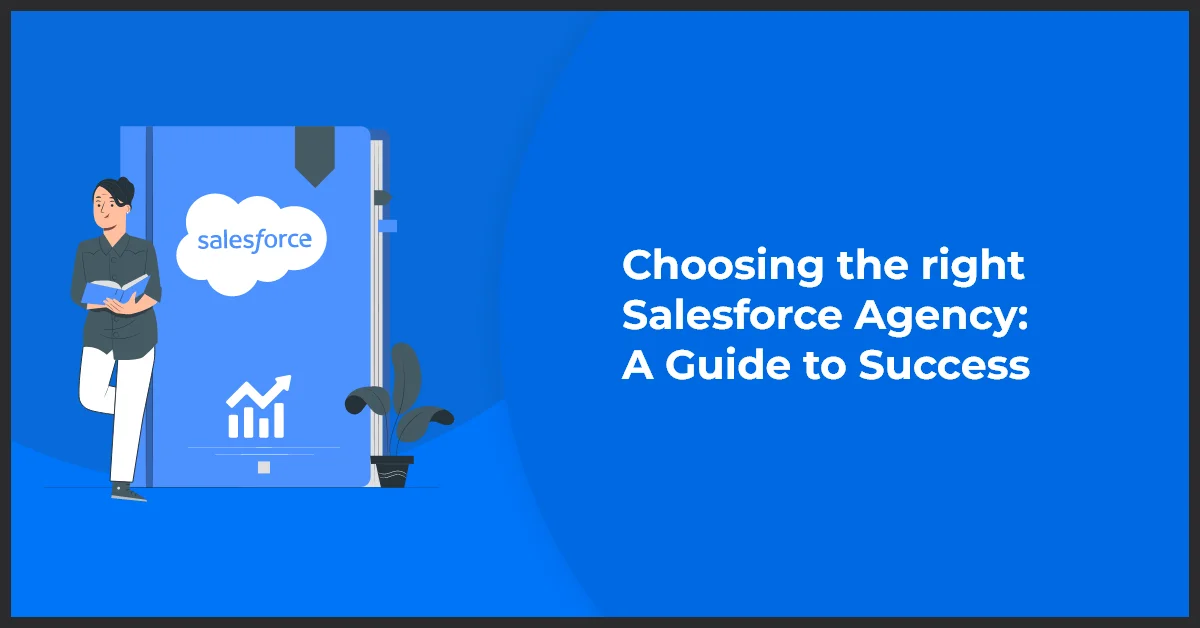When to Use Process Builder vs. Workflow Rules

Published on: June 23, 2023
Updated on: October 10, 2024
1961 Views
- Salesforce
6 min read
In today's fast-paced business environment, it is essential to streamline and automate various processes to improve efficiency and productivity. Regarding Salesforce, two powerful automation tools, Process Builder and Workflow Rules, can help you achieve these goals.
However, understanding when to use each tool can make a significant difference in optimizing your Salesforce implementation.
In this article, we will delve into the intricacies of Process Builder and Workflow Rules, highlighting their key features and providing practical guidance on when to leverage each tool effectively.
Understanding Process Builder
Process Builder is a robust visual automation tool that allows you to create complex processes with a simple and intuitive interface. With Process Builder, you can automate business processes by defining criteria and actions. These criteria can be based on field changes, time-based events, or record creation/updating.
One of the primary advantages of Process Builder is its ability to work across objects, enabling you to create complex cross-object processes without writing code. By leveraging Process Builder, you can automate various tasks, including updating related records, sending email notifications, creating jobs, and invoking Apex classes.
Use Cases and Advantages of Process Builder in Salesforce
Process Builder excels in scenarios that require sophisticated automation and involve multiple objects. Here are a few use cases where Process Builder can be a game-changer:
- Automated Lead Conversion: When a lead meets specific criteria, such as a high lead score or a particular industry, Process Builder can automatically convert the lead, assign it to a sales representative, and update related records, such as creating an opportunity or contact.
- Cross-Object Field Updates: Imagine a scenario where you need to update a field on an account record whenever a related opportunity's stage changes. With Process Builder, you can easily define criteria based on opportunity stage changes and update the corresponding account field accordingly.
- Escalation Processes: Process Builder is instrumental in creating escalation processes. For instance, when a high-priority case remains unresolved for a specified duration, you can automatically escalate it by notifying the respective manager or team.
By leveraging the power of Process Builder, you can automate intricate business processes and reduce manual effort, leading to improved efficiency and enhanced user experience.
Pro Tip: Leverage Process Builder to automate complex business processes like lead conversion and escalation. Utilize cross-object field updates to enhance data accuracy, reduce manual effort, and significantly improve efficiency within your Salesforce environment.
Unveiling the Potential of Workflow Rules
Workflow Rules have been a cornerstone of Salesforce automation for quite some time. They are declarative automation tools that allow you to set up standard if/then logic to automate standard internal procedures and processes. Workflow Rules evaluate records as they are created or updated and trigger immediate or time-based actions.
When a record meets the specified criteria, Workflow Rules can perform various actions, such as updating field values, creating tasks, sending email alerts, or initiating outbound messages. Although Workflow Rules have limitations compared to Process Builder, they still offer robust automation capabilities.
Use Cases for Workflow Rules
Workflow Rules are well-suited for more straightforward automation scenarios that involve a single object and specific criteria. Here are a few use cases where Workflow Rules can be effective:
- Lead Assignment Rules: When a lead is created, Workflow Rules can evaluate specific criteria, such as lead source or location, and automatically assign the lead to the appropriate sales representative or queue.
- Email Alerts: Suppose you want to notify a team whenever a high-value opportunity is closed. Workflow Rules can trigger email alerts based on criteria, such as opportunity amount or stage.
- Field Updates: Workflow Rules are excellent for updating field values on the same record or parent record. For example, once a related task is completed, you can automatically populate a "Last Activity Date" field on the account object.
While Workflow Rules may not have the same level of flexibility as Process Builder, they provide a straightforward approach to automating standard business processes efficiently.
Pro Tip: Utilize Workflow Rules for straightforward automation tasks in Salesforce. They excel in scenarios like lead assignments and email alerts, efficiently handling single-object processes with specific criteria for timely and effective action.
Process Builder Vs Workflow Rules
Now that we have explored the capabilities of both Process Builder and Workflow Rules let's summarize their key differences and provide guidance on selecting the appropriate tool for your automation needs:
- Process Builder: Opt for Process Builder when you require complex automation that spans multiple objects or when you need to invoke Apex classes as part of your process. Process Builder is ideal for intricate processes that demand a high degree of flexibility and customization.
- Workflow Rules: Choose Workflow Rules for simpler automation scenarios that involve a single object and straightforward if/then logic. Workflow Rules are excellent for the quick and efficient automation of standard processes.
Pro Tip: Select Process Builder for complex, multi-object automation and high customization needs. Use Workflow Rules for simpler, single-object tasks with clear if/then logic, ensuring efficient and effective automation tailored to your business processes.
Remember, both Process Builder and Workflow Rules have their strengths and limitations, and choosing the right tool depends on the specific requirements of your business processes.
Key Takeaways
- Streamlining and automating processes in Salesforce using tools like Process Builder and Workflow Rules is essential for improving efficiency and productivity.
- Process Builder is best for complex automation scenarios involving multiple objects and requiring customization, while Workflow Rules are suited for simpler automation tasks involving a single object.
- Use cases for Process Builder include automated lead conversion and cross-object field updates, while Workflow Rules can effectively handle lead assignments and email alerts.
- Understanding each tool's strengths and limitations helps select the right one for specific automation needs.
- Leveraging both tools effectively can unlock the full potential of Salesforce automation and drive overall business success.
Conclusion
Efficient automation is crucial for maximizing productivity and streamlining business processes within Salesforce. Process Builder and Workflow Rules are powerful tools to help you achieve this objective. By understanding the unique strengths of each tool and identifying the right scenarios to leverage them, you can unlock the full potential of Salesforce automation.
Remember, Process Builder excels in complex automation scenarios that involve multiple objects and require a high level of customization. At the same time, Workflow Rules provide a more straightforward approach for automating standard processes on a single object.
At Growth Natives, we evaluate your specific requirements, assess the complexity of your business processes, and choose the appropriate tool accordingly. By doing so, we help you harness the power of Process Builder and Workflow Rules to optimize your Salesforce automation and drive business success. To know more about our services, email us at info@growthnatives.com or visit our website.
Frequently Asked Questions
Process Builder allows for more complex automation with multiple actions and criteria, while Workflow Rules are simpler and limited to single actions based on specific criteria.
Choose Process Builder when you need to automate complex processes, use multiple criteria, or perform actions beyond what Workflow Rules can handle, such as creating records or sending custom notifications.
Salesforce focuses on enhancing Process Builder and Flow as the primary automation tools, while Workflow Rules are being phased out, encouraging users to transition to more advanced automation options.
Process Builder provides a user-friendly interface, supports multiple actions in one process, allows for branching logic, and offers better visibility into the automation process, making it more powerful than Workflow Rules.
Yes, you can use Process Builder and Workflow Rules together in Salesforce. Still, it is recommended that we gradually migrate to Process Builder for more robust automation capabilities as Workflow Rules are deprecated.



